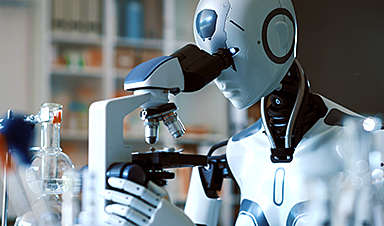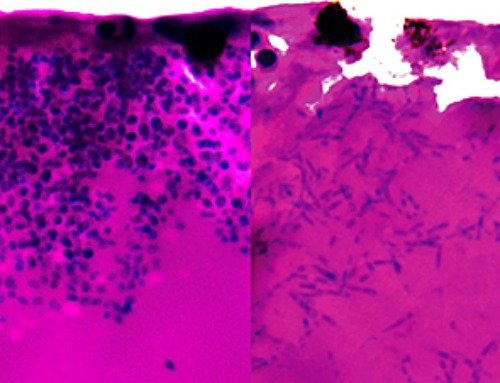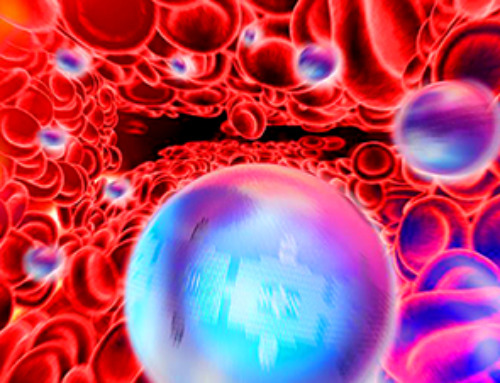A recent article published in the Journal of Chemical Information and Modeling researchers at Southern Methodist University (SMU) have developed SmartCADD, an open-source virtual tool designed to speed up drug discovery.
SmartCADD combines artificial intelligence, quantum mechanics, and computer-assisted drug design (CADD) techniques to screen billions of chemical compounds, significantly shortening the time needed for drug development.In their study, researchers identified promising HIV drug candidates, highlighting the platform’s potential for broader applications in drug research. The tool’s development was made possible through an interdisciplinary collaboration between SMU’s chemistry and computer science departments.
Related Work
In the past, drug discovery was slowed by challenges such as limited computational power and the manual screening of chemical compounds. Traditional methods also struggled to handle today’s vast chemical databases and predict drug behavior in complex biological systems, leading to longer timelines for identifying promising candidates.
SmartCADD in Drug Discovery
SmartCADD is a virtual tool designed to enhance drug discovery by integrating artificial intelligence (AI), quantum mechanics, and Computer Assisted Drug Design (CADD) techniques. The method starts with SmartCADD’s Pipeline Interface, which collects data and runs a series of filters to analyze chemical compounds.
This interface processes vast amounts of information, quickly screening through billions of compounds to identify those that show potential as drug candidates. The AI-driven models allow for rapid, large-scale analysis, addressing the time-consuming nature of traditional drug discovery methods.
The next step involves SmartCADD’s Filter Interface, which tells the system how to apply different filters to the chemical compounds. These filters are key to narrowing down the vast number of candidates by assessing various drug-related properties.
For instance, the filters predict how each compound will behave in the human body and evaluate the structural compatibility between the drug and target proteins. It helps to significantly streamline the drug testing process, ensuring only the most promising compounds advance to the next stages of analysis.
SmartCADD combines 2D and 3D modeling techniques to visualize the drug molecules and understand their interaction with biological targets. These models provide a detailed understanding of the chemical structure, helping researchers optimize the fit between potential drug molecules and the proteins they aim to interact with.
Additionally, SmartCADD uses explainable AI, which means that the AI’s decision-making process is transparent. This helps researchers understand why certain compounds are considered promising and how the predictions were made.
In a recent study, researchers applied SmartCADD to HIV drug discovery by analyzing data from the MoleculeNet library. By screening 800 million compounds, SmartCADD identified 10 million potential candidates, further refined using filters that focused on the properties of approved HIV drugs.
While the study focused on HIV, the researchers emphasized that SmartCADD can be adapted for various other drug discovery projects, making it a versatile and efficient tool for advancing drug research across multiple fields.
Innovative Drug Screening
The researchers showcased SmartCADD’s effectiveness by applying it to HIV drug discovery in three case studies, targeting specific HIV proteins. Using data from the MoleculeNet library, which contains 800 million chemical compounds, SmartCADD quickly screened and identified 10 million potential drug candidates. The platform then refined these results by comparing them to existing HIV drugs, advancing the most promising candidates for further analysis.
SmartCADD’s AI-driven models also provided insights into how these compounds behave in biological systems, predicting their pharmacokinetics and pharmacodynamics—key factors for understanding drug interactions with the human body. This streamlined approach not only accelerated the identification of viable drug candidates but also demonstrated SmartCADD’s adaptability for other therapeutic targets beyond HIV.
The success of SmartCADD highlights its potential to revolutionize drug discovery across multiple fields, including antibiotics and cancer therapies. It offers a promising tool for tackling urgent global health challenges.
Conclusion
To sum up, researchers at SMU created SmartCADD, an open-source tool that integrates artificial intelligence, quantum mechanics, and Computer Assisted Drug Design to expedite drug discovery.
Its application in HIV research showcased its ability to swiftly screen millions of compounds and adapt to various therapeutic targets. The project underscored the significance of interdisciplinary collaboration in advancing impactful research in drug development.
Journal Reference
Ayesh Madushanka, Laird, E., Clark, C., & Elfi Kraka. (2024). SmartCADD: AI-QM Empowered Drug Discovery Platform with Explainability. Journal of Chemical Information and Modeling, 64(17), 6799–6813. DOI: 10.1021/acs.jcim.4c00720, https://pubs.acs.org/doi/full/10.1021/acs.jcim.4c00720
News
AI Helped Scientists Stop a Virus With One Tiny Change
Using AI, researchers identified one tiny molecular interaction that viruses need to infect cells. Disrupting it stopped the virus before infection could begin. Washington State University scientists have uncovered a method to interfere with a key [...]
Deadly Hospital Fungus May Finally Have a Weakness
A deadly, drug-resistant hospital fungus may finally have a weakness—and scientists think they’ve found it. Researchers have identified a genetic process that could open the door to new treatments for a dangerous fungal infection [...]
Fever-Proof Bird Flu Variant Could Fuel the Next Pandemic
Bird flu viruses present a significant risk to humans because they can continue replicating at temperatures higher than a typical fever. Fever is one of the body’s main tools for slowing or stopping viral [...]
What could the future of nanoscience look like?
Society has a lot to thank for nanoscience. From improved health monitoring to reducing the size of electronics, scientists’ ability to delve deeper and better understand chemistry at the nanoscale has opened up numerous [...]
Scientists Melt Cancer’s Hidden “Power Hubs” and Stop Tumor Growth
Researchers discovered that in a rare kidney cancer, RNA builds droplet-like hubs that act as growth control centers inside tumor cells. By engineering a molecular switch to dissolve these hubs, they were able to halt cancer [...]
Platelet-inspired nanoparticles could improve treatment of inflammatory diseases
Scientists have developed platelet-inspired nanoparticles that deliver anti-inflammatory drugs directly to brain-computer interface implants, doubling their effectiveness. Scientists have found a way to improve the performance of brain-computer interface (BCI) electrodes by delivering anti-inflammatory drugs directly [...]
After 150 years, a new chapter in cancer therapy is finally beginning
For decades, researchers have been looking for ways to destroy cancer cells in a targeted manner without further weakening the body. But for many patients whose immune system is severely impaired by chemotherapy or radiation, [...]
Older chemical libraries show promise for fighting resistant strains of COVID-19 virus
SARS‑CoV‑2, the virus that causes COVID-19, continues to mutate, with some newer strains becoming less responsive to current antiviral treatments like Paxlovid. Now, University of California San Diego scientists and an international team of [...]
Lower doses of immunotherapy for skin cancer give better results, study suggests
According to a new study, lower doses of approved immunotherapy for malignant melanoma can give better results against tumors, while reducing side effects. This is reported by researchers at Karolinska Institutet in the Journal of the National [...]
Researchers highlight five pathways through which microplastics can harm the brain
Microplastics could be fueling neurodegenerative diseases like Alzheimer's and Parkinson's, with a new study highlighting five ways microplastics can trigger inflammation and damage in the brain. More than 57 million people live with dementia, [...]
Tiny Metal Nanodots Obliterate Cancer Cells While Largely Sparing Healthy Tissue
Scientists have developed tiny metal-oxide particles that push cancer cells past their stress limits while sparing healthy tissue. An international team led by RMIT University has developed tiny particles called nanodots, crafted from a metallic compound, [...]
Gold Nanoclusters Could Supercharge Quantum Computers
Researchers found that gold “super atoms” can behave like the atoms in top-tier quantum systems—only far easier to scale. These tiny clusters can be customized at the molecular level, offering a powerful, tunable foundation [...]
A single shot of HPV vaccine may be enough to fight cervical cancer, study finds
WASHINGTON -- A single HPV vaccination appears just as effective as two doses at preventing the viral infection that causes cervical cancer, researchers reported Wednesday. HPV, or human papillomavirus, is very common and spread [...]
New technique overcomes technological barrier in 3D brain imaging
Scientists at the Swiss Light Source SLS have succeeded in mapping a piece of brain tissue in 3D at unprecedented resolution using X-rays, non-destructively. The breakthrough overcomes a long-standing technological barrier that had limited [...]
Scientists Uncover Hidden Blood Pattern in Long COVID
Researchers found persistent microclot and NET structures in Long COVID blood that may explain long-lasting symptoms. Researchers examining Long COVID have identified a structural connection between circulating microclots and neutrophil extracellular traps (NETs). The [...]
This Cellular Trick Helps Cancer Spread, but Could Also Stop It
Groups of normal cbiells can sense far into their surroundings, helping explain cancer cell migration. Understanding this ability could lead to new ways to limit tumor spread. The tale of the princess and the [...]





















